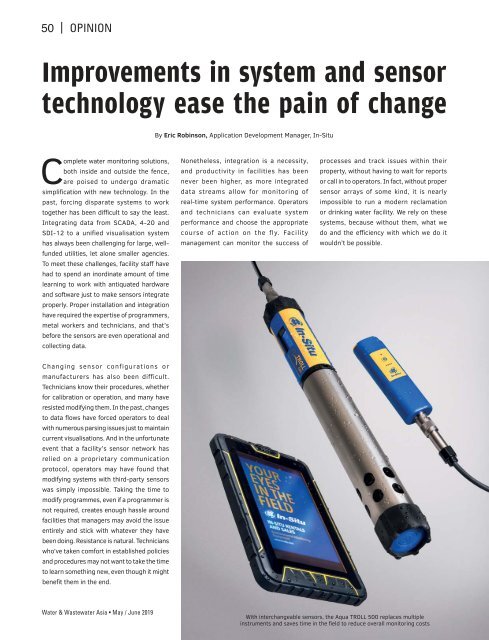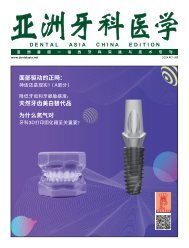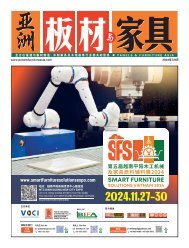Water & Wastewater Asia May/June 2019
Water & Wastewater Asia is an expert source of industry information, cementing its position as an indispensable tool for trade professionals in the water and wastewater industry. As the most reliable publication in the region, industry experts turn this premium journal for credible journalism and exclusive insight provided by fellow industry professionals. Water & Wastewater Asia incorporates the official newsletter of the Singapore Water Association (SWA).
Water & Wastewater Asia is an expert source of industry information, cementing its position as an indispensable tool for trade professionals in the water and wastewater industry. As the most reliable publication in the region, industry experts turn this premium journal for credible journalism and exclusive insight provided by fellow industry professionals. Water & Wastewater Asia incorporates the official newsletter of the Singapore Water Association (SWA).
You also want an ePaper? Increase the reach of your titles
YUMPU automatically turns print PDFs into web optimized ePapers that Google loves.
50 | OPINION<br />
Improvements in system and sensor<br />
technology ease the pain of change<br />
By Eric Robinson, Application Development Manager, In-Situ<br />
Complete water monitoring solutions,<br />
both inside and outside the fence,<br />
are poised to undergo dramatic<br />
simplification with new technology. In the<br />
past, forcing disparate systems to work<br />
together has been difficult to say the least.<br />
Integrating data from SCADA, 4-20 and<br />
SDI-12 to a unified visualisation system<br />
has always been challenging for large, wellfunded<br />
utilities, let alone smaller agencies.<br />
To meet these challenges, facility staff have<br />
had to spend an inordinate amount of time<br />
learning to work with antiquated hardware<br />
and software just to make sensors integrate<br />
properly. Proper installation and integration<br />
have required the expertise of programmers,<br />
metal workers and technicians, and that’s<br />
before the sensors are even operational and<br />
collecting data.<br />
Nonetheless, integration is a necessity,<br />
and productivity in facilities has been<br />
never been higher, as more integrated<br />
data streams allow for monitoring of<br />
real-time system performance. Operators<br />
and technicians can evaluate system<br />
performance and choose the appropriate<br />
course of action on the fly. Facility<br />
management can monitor the success of<br />
processes and track issues within their<br />
property, without having to wait for reports<br />
or call in to operators. In fact, without proper<br />
sensor arrays of some kind, it is nearly<br />
impossible to run a modern reclamation<br />
or drinking water facility. We rely on these<br />
systems, because without them, what we<br />
do and the efficiency with which we do it<br />
wouldn’t be possible.<br />
Changing sensor configurations or<br />
manufacturers has also been difficult.<br />
Technicians know their procedures, whether<br />
for calibration or operation, and many have<br />
resisted modifying them. In the past, changes<br />
to data flows have forced operators to deal<br />
with numerous parsing issues just to maintain<br />
current visualisations. And in the unfortunate<br />
event that a facility’s sensor network has<br />
relied on a proprietary communication<br />
protocol, operators may have found that<br />
modifying systems with third-party sensors<br />
was simply impossible. Taking the time to<br />
modify programmes, even if a programmer is<br />
not required, creates enough hassle around<br />
facilities that managers may avoid the issue<br />
entirely and stick with whatever they have<br />
been doing. Resistance is natural. Technicians<br />
who’ve taken comfort in established policies<br />
and procedures may not want to take the time<br />
to learn something new, even though it might<br />
benefit them in the end.<br />
<strong>Water</strong> & <strong>Wastewater</strong> <strong>Asia</strong> • <strong>May</strong> / <strong>June</strong> <strong>2019</strong><br />
With interchangeable sensors, the Aqua TROLL 500 replaces multiple<br />
instruments and saves time in the field to reduce overall monitoring costs


















